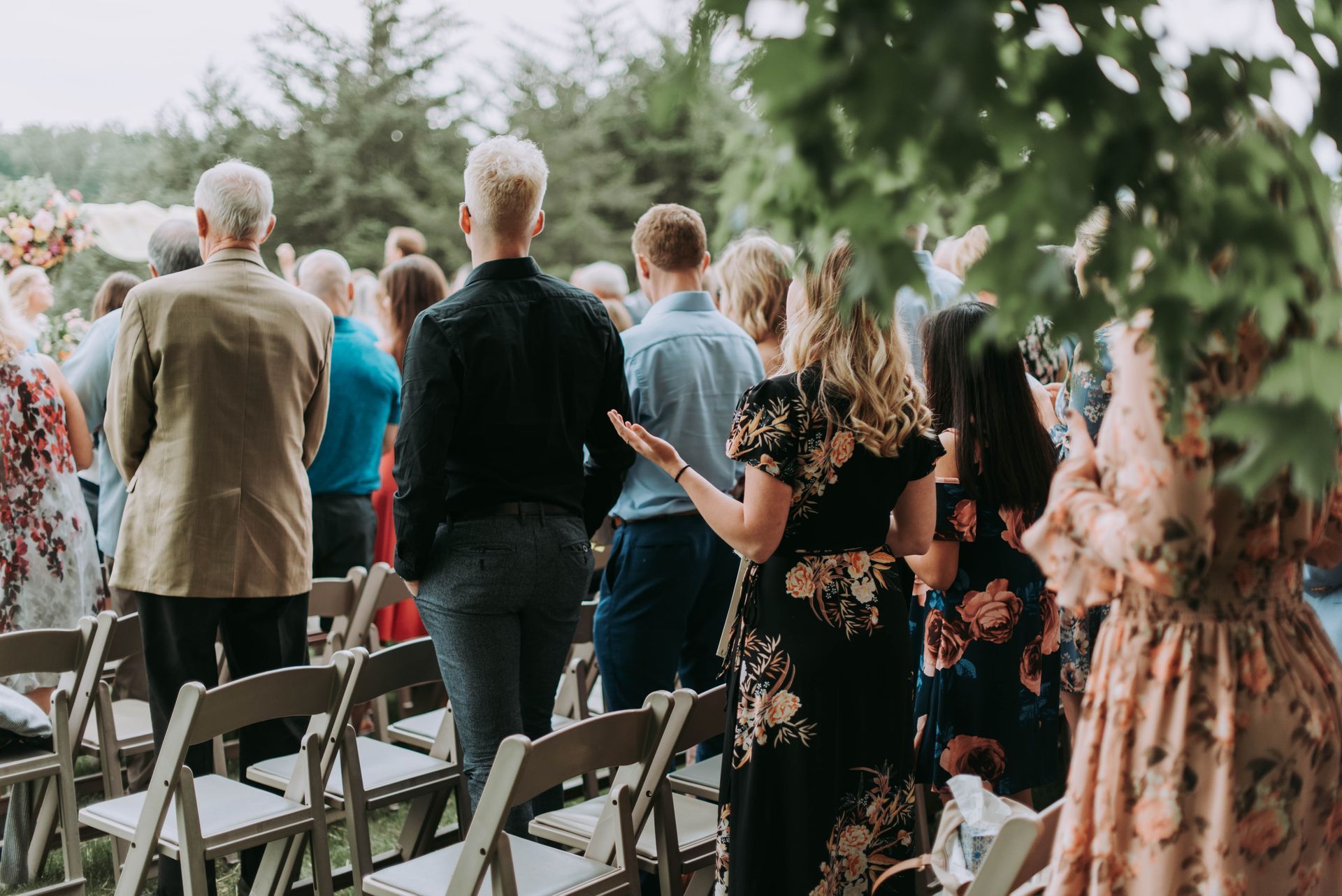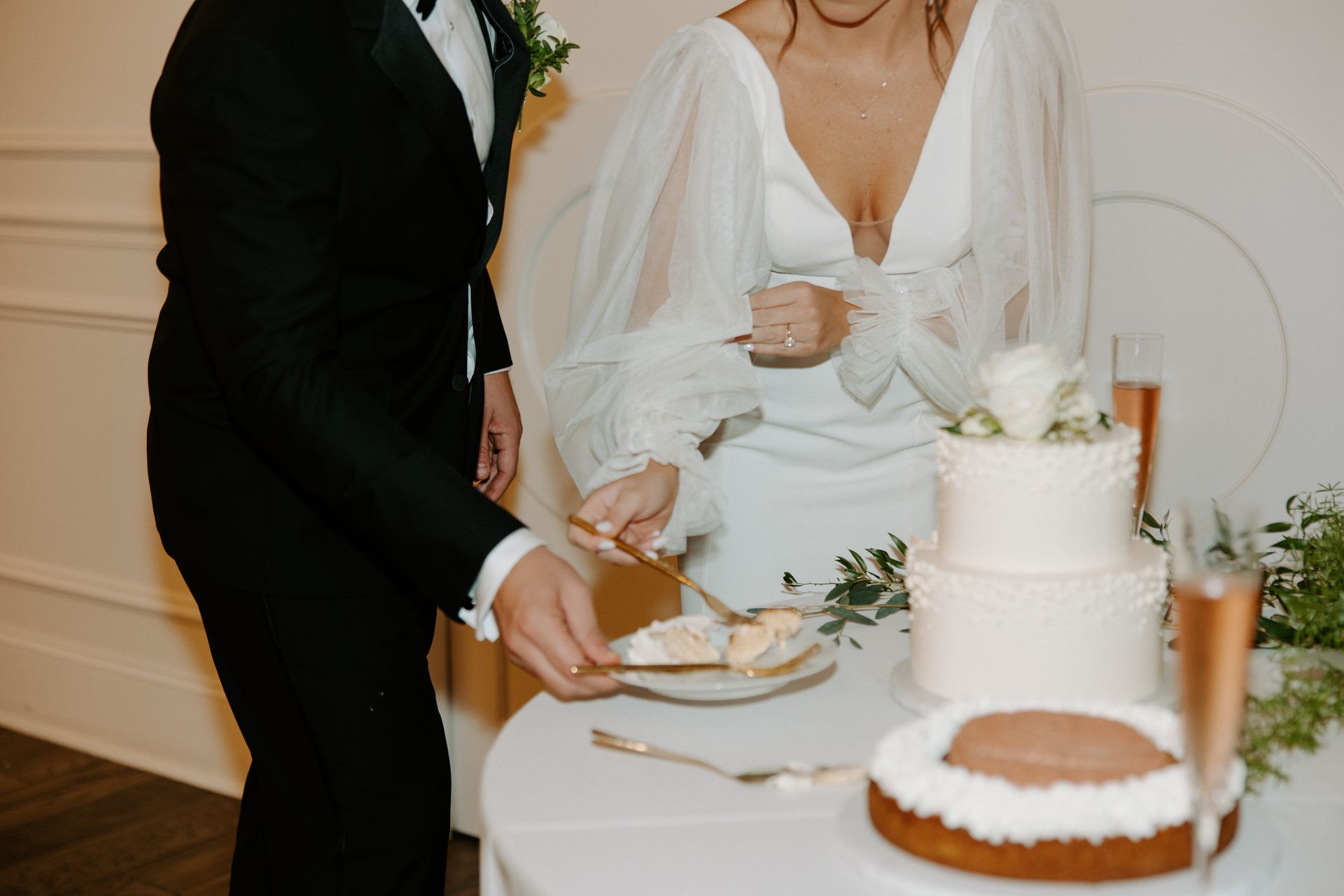Blog Layout
Unveiling the Intricacies and Costs of Wedding Dress Alterations
A Toast Custom Event Planning • August 16, 2023
Congratulations on your upcoming wedding! As wedding planners, we understand that finding the perfect wedding dress is an essential part of your special day. However, it's important to remember that alterations are often necessary to ensure your gown fits like a dream. In this blog post, we will delve into the intricacies of wedding dress alterations and shed light on the costs involved, helping you navigate this process with ease.
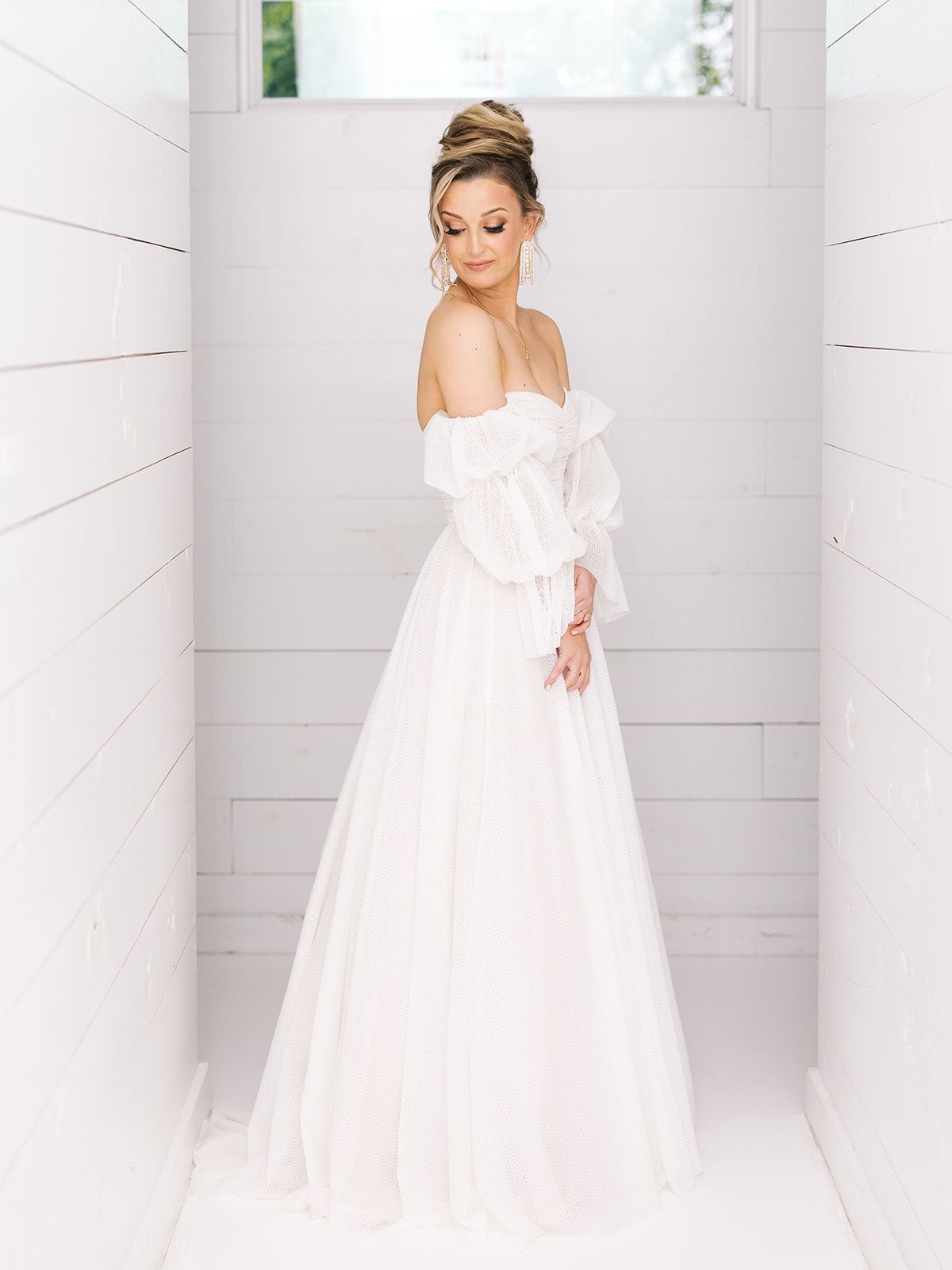
1. The Importance of Wedding Dress Alterations:
Wedding dress alterations are like the finishing touches that transform a beautiful gown into your dream dress. These alterations are crucial to achieving the perfect fit, enhancing your comfort, and ensuring you feel confident and stunning on your wedding day. They can help address any concerns such as length, bust, waist, or hips, making your dress uniquely yours.
2. Factors Influencing Alteration Costs:
The cost of wedding dress alterations can vary depending on several factors. Here are some key aspects to consider:
a) Complexity of Alterations: The complexity of the changes required plays a significant role in determining the cost. Simple alterations like hemming, adding bustles, or taking in seams may be less expensive, while more intricate modifications such as beadwork, lace detailing, or re-shaping the silhouette may incur additional charges. Plan to pay a little extra for these customizations!
b) Fabric and Embellishments: Delicate fabrics like lace, silk, or chiffon require extra care and expertise during alterations, which can impact the cost. Similarly, intricate embellishments, such as beading or embroidery, may require more time and skilled craftsmanship, contributing to higher alteration expenses. Another example: the number of layers your skirt has will increase the complexity of hemming and adding a bustle.
c) Timelines and Rush Orders: Planning ahead is always advised when it comes to wedding dress alterations. Rush orders or last-minute alterations may come with an additional fee. Scheduling your alterations in advance ensures ample time for adjustments and avoids unnecessary stress. At the same time, stick to the timeline of 6-8 weeks prior to the wedding to account for any changes to your body.
3. Finding a Skilled Seamstress or Tailor:
Choosing a reputable and experienced seamstress or tailor is crucial to achieving the best results. Seek recommendations from friends, family, or your wedding planner, and don't hesitate to ask for their portfolio or examples of their previous work. Schedule consultations with potential professionals to discuss your vision, alterations needed, and obtain cost estimates. It is always okay to get more than one opinion.
4. Budgeting for Alterations:
While it's challenging to provide an exact cost estimate, it's generally recommended to set aside around 10-20% of your wedding dress budget for alterations. This allocation ensures you have sufficient funds to create the perfect fit and address any unexpected alterations that may arise. This also largely depends on where you are located and what needs to be altered - we are in Dallas, Texas (USA) and rarely see alterations cost under $500.
5. Timeline for Alterations:
To avoid any last-minute surprises, it's advisable to start the alteration process at least 6-8 weeks before your wedding day. This allows ample time for fittings, adjustments, and any additional modifications that may be required. Remember, alterations can be a gradual process, so patience is key. A good seamstress will want to do 2-3 fittings - any less than that and you cannot guarantee you will be thrilled with the results.
Y'all, wedding dress alterations are an essential part of the bridal journey, ensuring your dress fits flawlessly and accentuates your natural beauty. By understanding the intricacies and costs involved, you can approach this process confidently. Remember to communicate openly with your seamstress or tailor, trust their expertise, and most importantly, enjoy the transformation as your dream dress comes to life!
Don't forget to listen for more tips and tricks on our podcast! https://pod.link/1619343446
Wishing you a joyous wedding day filled with love, laughter, and unforgettable memories!
Cheers,
Mary & Angela

By A Toast Custom Event Planning
•
October 11, 2023
1. Availability and Capacity: Is the venue available on my desired wedding date? Can the venue accommodate the size of my guest list comfortably? Are there any restrictions or minimum/maximum guest limits? 2. Cost and Packages: What are the rental fees and what do they include? Are there any additional costs, such as service charges or gratuities? Do you offer any wedding packages, and what do they entail? 3. Venue Logistics: How many hours are included in the rental? Can we extend the time if needed? Is there a backup plan in case of bad weather or unforeseen circumstances? Are there any noise restrictions or curfews we should be aware of? 4. Catering and Vendors: Do you have an on-site caterer, or can we bring in our own? Are there any restrictions on outside vendors or preferred vendor lists? Is there a food and beverage minimum requirement? 5. Amenities and Services: What facilities and amenities are available to us and our guests? Do you provide tables, chairs, linens, or any other decor items? Is there a dedicated event coordinator to assist us throughout the planning process and on the wedding day? 6. Logistics and Parking: Is there ample parking available for guests? Is it complimentary? Is the venue easily accessible for all guests, including those with disabilities? Are there any nearby accommodations for out-of-town guests? Rules and Restrictions: Are there any specific rules or restrictions we should be aware of (no overnight parking, etc)? Are there any limitations on decorations, candles, or open flames? Are there any restrictions on music or entertainment (noise ordinance, cutoff time, etc)? Remember, it's important to visit the venue in person if possible, as it will give you a better sense of the space and its ambiance. Are they making any changes to the building or landscape before your big day? Also consider the scenery and what it may look like the time of year that your wedding is taking place! Don't hesitate to ask any additional questions that come to mind during your visit!

By A Toast Custom Event Planning
•
October 4, 2023
1. Research and Recommendations: Start by researching different hair and makeup artists in your area. Look for their portfolios, reviews, and recommendations from friends or family who have previously used their services. This will help you narrow down your options and find a team that suits your style and preferences. PRO TIP: this is a task that can easily be assigned to you wedding planner! We have the best recommendations! 2. Budget: Determine your budget for hair and makeup services. Prices can vary greatly depending on the experience and reputation of the team. Keep in mind that higher prices don't always guarantee better results, so find a balance that works for you. 3. Availability: Check if the hair and makeup team is available on your wedding day. Popular artists may get booked up quickly, so it's essential to inquire about their availability as early as possible to secure your desired date. 4. Trial Session: It's highly recommended to schedule a trial session with the hair and makeup team before your wedding day. This will give you an opportunity to discuss your ideas, test different looks, and ensure that you are comfortable with their skills and communication style. Be open about your preferences and provide feedback during the trial to achieve the desired outcome. 5. Portfolio Review: Take a close look at the team's portfolio to ensure they have experience in creating the specific styles you desire. Look for examples of their work on people with similar hair or skin types to yours to gauge their expertise. 6. Communication: Good communication with the hair and makeup team is vital. Make sure they understand your vision and are receptive to your ideas. Discuss any concerns or special requests you may have, such as allergies, preferences for cruelty-free products, or specific cultural or religious requirements. 7. Contracts and Agreements: Before finalizing the booking, carefully review the contract or agreement provided by the hair and makeup team. Ensure it includes the agreed-upon services, prices, payment terms, cancellation policies, and any additional details or clauses you discussed. 8. Time Management: Discuss the schedule and timeline for getting ready on your wedding day. Confirm the number of people the team can accommodate and ensure they allocate sufficient time for each person's hair and makeup. Punctuality is crucial to avoid any unnecessary stress or delays. Remember, finding a wedding hair and makeup team that aligns with your style and understands your vision will help you feel confident and beautiful on your special day!

By A Toast Custom Event Planning
•
September 20, 2023
Availability and logistics: - Are you available on my wedding date? - How many weddings do you typically cater on the same day? - Can you accommodate my estimated guest count (how quickly)? Menu and customization: - What type of cuisine do you specialize in? - Can you accommodate dietary restrictions or special requests? - Can you create a customized menu based on my preferences and theme? Tastings and food presentation: - Do you offer tastings, and is there an additional charge for them? - Can I see examples of your food presentation or sample menus? - Can you provide references from previous clients who have used your services? Staffing and service: - How many staff members will be present at my wedding? - Will you provide waitstaff, bartenders, or other necessary personnel? - How do you handle the setup and breakdown of the catering service (what is your team in charge of i.e. place settings, water goblets, etc)? Pricing and packages: - What is the cost per person for the menu options I'm interested in? - What is included in your catering packages? - Are there any additional charges, such as gratuity, rentals, or travel fees? Coordination and flexibility: - Will you coordinate with other vendors, such as the venue or wedding planner? - Can you provide assistance with menu planning and event timelines? - How flexible are you with last-minute changes or adjustments? Licensing and insurance: - Are you licensed and insured? - Can you provide a copy of your liability insurance certificate? - Do you have any health department certifications? Cancellation and refund policies: - What is your cancellation policy? - Will I receive a refund if the event gets canceled or postponed? - How far in advance do I need to notify you of any changes? Contract and payment terms: - Can we review and sign a contract that outlines the services, expectations, and rights of both parties? - What is the deposit amount, and when is the final payment due? - What forms of payment do you accept? Remember to discuss any specific details related to your wedding, such as table setup, bar services, plated/stations/buffet or any unique requirements you may have. It's crucial to have open communication with your caterer to ensure a smooth and enjoyable dining experience for you and your guests.
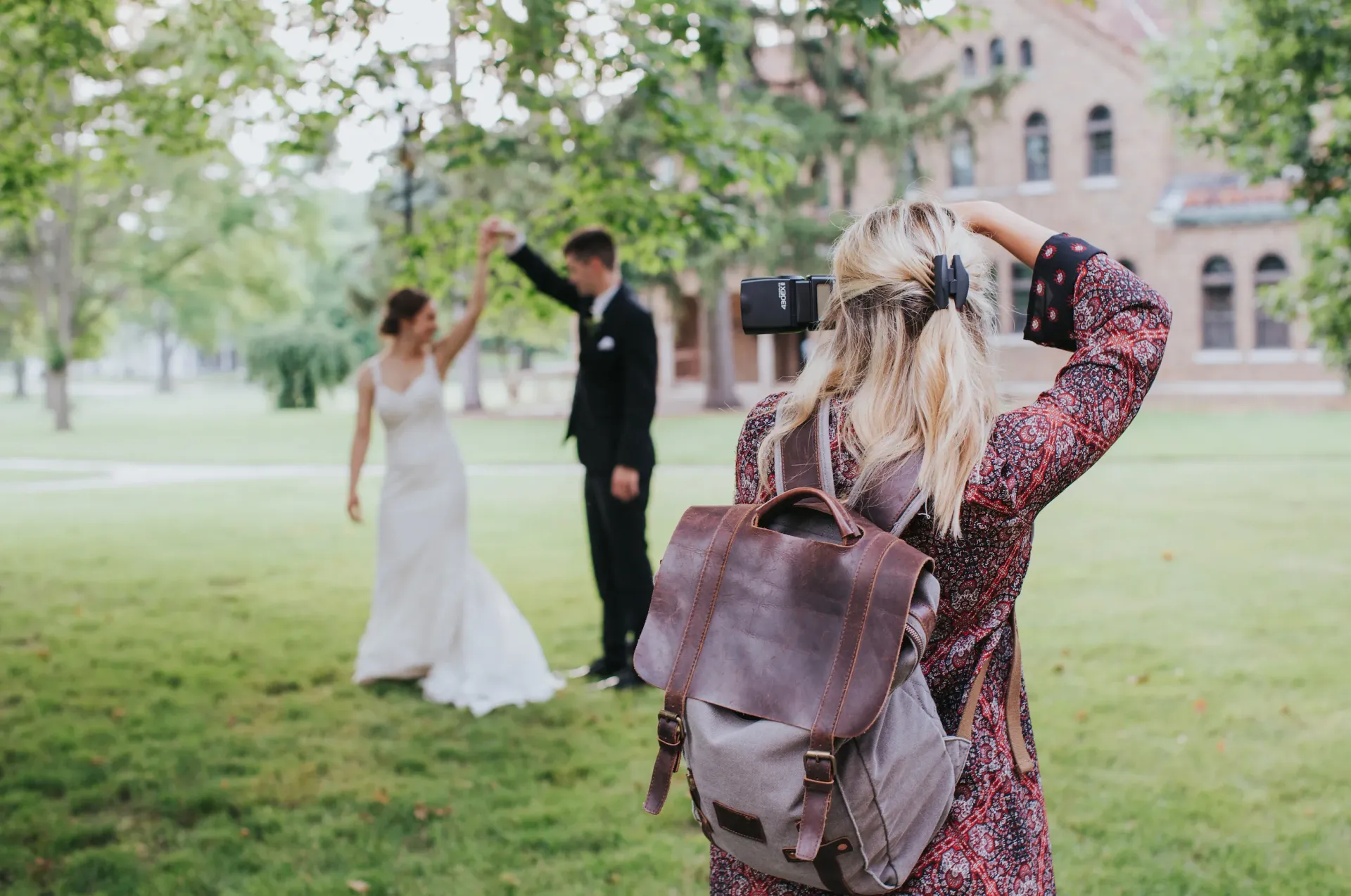
By A Toast Custom Event Planning
•
September 13, 2023
Portfolio and style: - Can you show me examples of your previous wedding photography work? - What is your photography style? (e.g., traditional, photojournalistic, artistic) - Do you have experience shooting weddings similar to mine in terms of style and size? Experience and approach: - How long have you been working as a wedding photographer? - How many weddings have you photographed? - How do you ensure that you capture all the important moments during a wedding? Availability and logistics: - Are you available on my wedding date? - How many hours of coverage do your packages include? - Do you have backup equipment in case of any technical issues? Packages and pricing: - What are your wedding photography packages, and what do they include? - Can you customize a package to meet my specific needs and budget? - Are there any additional charges, such as travel fees or overtime fees? Collaborations and deliverables: - Will you be the actual photographer at my wedding, or will it be someone else from your team? - How long will it take to receive the final edited photos? - What format will the photos be delivered in, and how many images can I expect to receive? Professionalism and references: - Do you have liability insurance? - Can you provide references or testimonials from previous clients? - Are you a member of any professional photography associations? Contract and rights: - Can we review and sign a contract that outlines the services, expectations, and rights of both parties? - Do you retain the rights to the photos, or will I have full ownership and printing rights? Vibe check: Remember to ask about anything specific to your wedding that may be important to you, such as specific shots or special requests (ex working with horses, shooting a champagne spray, fireworks, etc.) And do they FIT - they should feel like putting on your favorite sweatshirt - if the fit is awkward, you’ll feel awkward in front of their lens.

By A Toast Custom Event Planning
•
September 6, 2023
Experience and qualifications: How long have you been working as a wedding planner? Have you planned weddings similar to mine in terms of style, size, and budget? Can you provide references or testimonials from previous clients? Services and packages: What services do you offer? Do you provide full-service planning or just coordination on the day of the wedding? Can you customize packages to meet my specific needs and budget? Are there any additional services you provide, such as assisting with vendor selection or design concept development? Availability and capacity: Are you available on my wedding date? How many other weddings will you be working on during the same time period? Do you have a team or assistants to ensure everything runs smoothly on the day of the wedding? Communication and collaboration: How often will we be in contact during the planning process? Are you open to my ideas and preferences, or do you have a specific style or vision? How do you handle conflicts or disagreements with clients or vendors? Budget and fees: What is your fee structure? Is it a flat fee or a percentage of the overall wedding budget? Do you have any preferred vendors or can I choose my own? Can you help with negotiating contracts and getting the best value for my money? Contingency plans: What measures do you have in place for unforeseen circumstances, such as bad weather or vendor cancellations? How do you handle emergencies or last-minute changes? Remember, it's important to find a wedding planner who not only has the necessary experience and skills but also understands your vision and is someone you feel comfortable working with. Always look inward and ask yourself, "Do I feel comfortable with this planner? Do I trust this planner? Can I see this planner with me on my wedding day?"

By A Toast Custom Event Planning
•
August 2, 2023
As your big day approaches, you may find yourself juggling numerous tasks and responsibilities in preparation for your wedding. This is common with almost ALL of our brides! One crucial aspect to consider is how many days to take off from work before the event. The decision primarily depends on factors such as travel plans, distance, and the extent of do-it-yourself (DIY) involvement. This blog post aims to provide guidance in finding the ideal balance between work and wedding preparations. 1. Assess Your Travel Plans: If your wedding involves travel, it's essential to account for the time needed to reach your destination and settle in. Consider the following tips: a. Nearby Venues: If your wedding is taking place locally or within a short drive, you may only need a day or two off to ensure you have enough time for last-minute preparations and to relax before the big day. b. Out-of-Town Weddings: For weddings taking place a few hours away, you might consider taking off an additional day or two to accommodate travel, rehearsal dinners, and any unexpected delays. c. Destination Weddings: Destination weddings often require more time off due to the distance and the need to acclimate to the new surroundings. Consider taking at least three to four days off to ensure a stress-free and enjoyable experience. Make sure essential items such as your dress, wedding rings, etc. arrive SEVERAL days before the wedding! 2. Evaluate Your DIY Commitment: DIY projects can add a personal touch to your wedding but can also demand significant time and effort. Assess your level of involvement and allocate adequate time off accordingly: a. Extensive DIY Involvement: If you have taken on numerous DIY projects, such as creating centerpieces, designing invitations, or crafting wedding favors, it's wise to take more time off work. Plan for a week or more to allow for any unexpected challenges and ensure you have enough time to complete everything without feeling overwhelmed. NOTE: If you are hosting your wedding ceremony or reception on private property owned by you, your family, or friends, consider this "extensive" DIY involvement - there will be much preparation to do the week of the wedding! b. Limited DIY Engagement: If DIY projects are minimal, a couple of days off before your wedding may suffice. This will enable you to focus on finalizing any remaining details and provide a buffer for any last-minute adjustments. 3. Consider Personal Factors: In addition to travel plans and DIY involvement, it's crucial to consider individual factors when deciding how many days to take off: a. Stress Management: If you find yourself easily overwhelmed or anxious during busy periods, consider taking a few extra days off to unwind, relax, and focus solely on self-care. This will allow you to approach your wedding day with a refreshed mindset and reduced stress levels. b. Support System: Assess the availability of your support system, such as family, friends, or wedding planners. Depending on their involvement, you may require fewer days off work if you have reliable assistance in managing wedding-related tasks. 4. Communicate with Your Employer: Once you have determined the ideal number of days to take off, it's essential to communicate your plans with your employer as soon as possible. Providing ample notice allows for a smoother transition and enables your employer to make necessary arrangements to cover your absence. Every bride's circumstances are unique, and determining the number of days to take off work before the wedding depends on various factors. By assessing your travel plans, evaluating your DIY involvement, and considering personal factors, you can strike the perfect balance between work commitments and wedding preparations. Remember, it's essential to plan ahead, communicate effectively, and prioritize self-care during this exciting and busy time in your life. Happy planning!

By A Toast Custom Event Planning
•
July 21, 2023
Your wedding day is a special occasion filled with love, celebration, and the joy of starting a new chapter in your life. As you embark on this journey together, your wedding registry should reflect your needs, preferences, and personal style. To help you curate a diverse and well-rounded registry, we have compiled a list of gift ideas for every price point. Let's explore how you can create a registry that caters to all your guests' budgets. 1. Under $50: a) Kitchen essentials: Think utensils, baking sheets, mixing bowls, or a stylish cookbook. b) Home decor: Decorative pillows, picture frames, or unique wall art. c) Personalized items: Customized mugs, monogrammed towels, or engraved cutting boards. d) Outdoor accessories: A picnic set, gardening tools, or a cozy hammock for your backyard. 2. $50-$100: a) Appliances: Small kitchen appliances like a coffee maker, blender, or toaster. b) Bedding and linens: High-quality sheets, cozy comforters, or luxurious towels. c) Cookware: A non-stick skillet, Dutch oven, or a versatile set of pots and pans. d) Barware: Wine glasses, cocktail shakers, or a stylish decanter for entertaining. 3. $100-$250: a) Home electronics: A streaming device, wireless speakers, or a compact camera. b) Furniture: A beautiful accent chair, a small side table, or a chic bar cart. c) Kitchen gadgets: Instant Pot, stand mixer, or a convenient food processor. d) Outdoor equipment: A portable grill, camping gear, or a set of patio furniture. 4. $250-$500: a) Décor upgrades: An elegant chandelier, a statement mirror, or a unique centerpiece. b) Kitchen upgrades: An espresso machine, a high-end blender, or a professional-grade knife set. c) Smart home devices: A home security system, a voice-activated assistant, or a robotic vacuum. d) Travel experiences: A weekend getaway, a hot air balloon ride, or a cooking class for two. 5. $500+: a) Home improvement projects: A new set of kitchen cabinets, a bathroom remodel, or a garden makeover. b) Luxury bedding: A plush mattress, high-thread-count sheets, or a customizable sleep system. c) Tech upgrades: A large-screen TV, a state-of-the-art sound system, or a gaming console. d) Honeymoon fund: Allow guests to contribute to your dream honeymoon destination. Remember, the purpose of a wedding registry is to create a list of items that will help you start your new life together. However, don't be afraid to add some fun and unique gifts that reflect your interests and hobbies. Creating a wedding registry that caters to various price points ensures that your guests can find a gift that suits their budget, while also making your registry diverse and exciting. By including items from different categories, you can create a well-rounded list that covers both necessities and indulgences. Remember, your wedding day is about celebrating love, and the gifts you receive should reflect that joy. Happy registry planning!
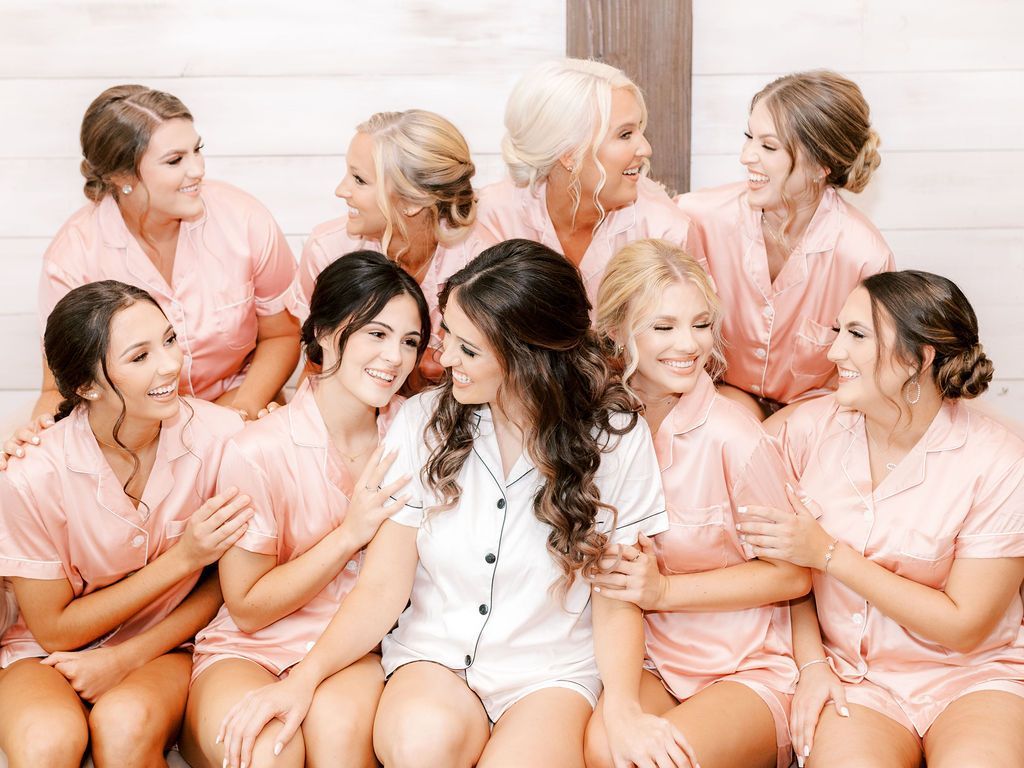
By A Toast Custom Event Planning
•
July 13, 2023
In this week's episode of The Ring Dish, we encourage our bride to DROP this bridesmaid (yes, it’s really that bad). But not every conflict is unresolvable and we’ve packed this episode with some tips for YOU if you find yourself in conflict with one of your bridesmaids. Wedding planning can sometimes be accompanied by a few bumps in the road, including conflicts with your bridesmaids. But fear not, because we’ve got some tips on how to smoothly resolve any disagreements and strengthen those special bonds! ✨ Communication is key! Talk openly and honestly with your bridesmaid about the issue at hand. Share your feelings and actively listen to her perspective too. Remember, a healthy conversation is the first step towards finding a resolution! ✨ Find common ground. Remember why you chose her to be by your side on your big day, and focus on the positive aspects of your relationship. ✨ Compromise and be flexible. It's important to find middle ground where both of you feel heard and valued. Be willing to make adjustments and consider alternative solutions that accommodate each other's needs. ✨ Seek guidance if needed. Sometimes, conflicts can be tricky to navigate alone. Don't hesitate to reach out to a trusted friend or family member for advice. Their fresh perspective can bring new insights and help mediate the situation. You may even need to bring additional perspective to the conversation (you’ll see what we mean when you listen to the episode!) ✨ Remember the bigger picture. Remind yourself of the love and joy that surrounds your wedding day. Always remember, conflicts are just temporary bumps on the road to your dream wedding. By approaching them with understanding, empathy, and open communication, you can strengthen your bond with your bridesmaids and create an even more beautiful experience for everyone involved. Happy planning! All our love, Mary & Angela
send us a message:
Thank you for contacting us.
We will get back to you as soon as possible.
We will get back to you as soon as possible.
Oops, there was an error sending your message.
Please try again later.
Please try again later.
Wedding and event planning services offered in the Dallas-Fort Worth Metroplex in Texas. Based out of DFW, Texas.
© 2025
All Rights Reserved | A Toast - Custom Event Planning
© 2025
All Rights Reserved | A Toast - Custom Event Planning
Terms & Conditions
